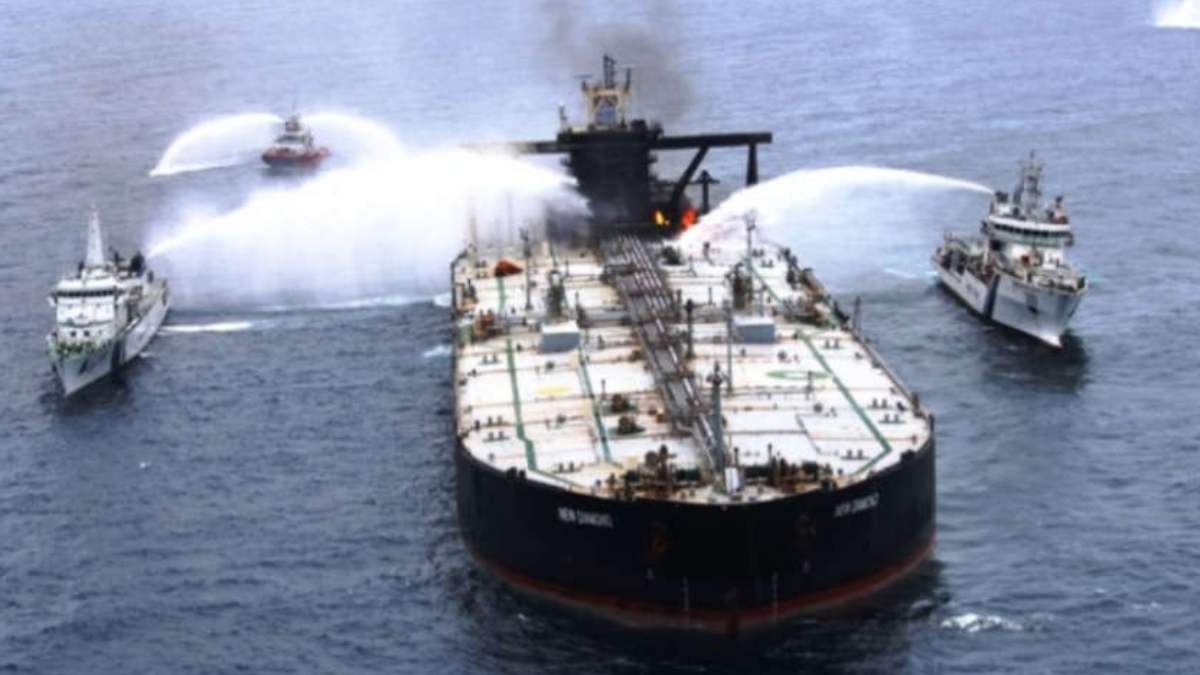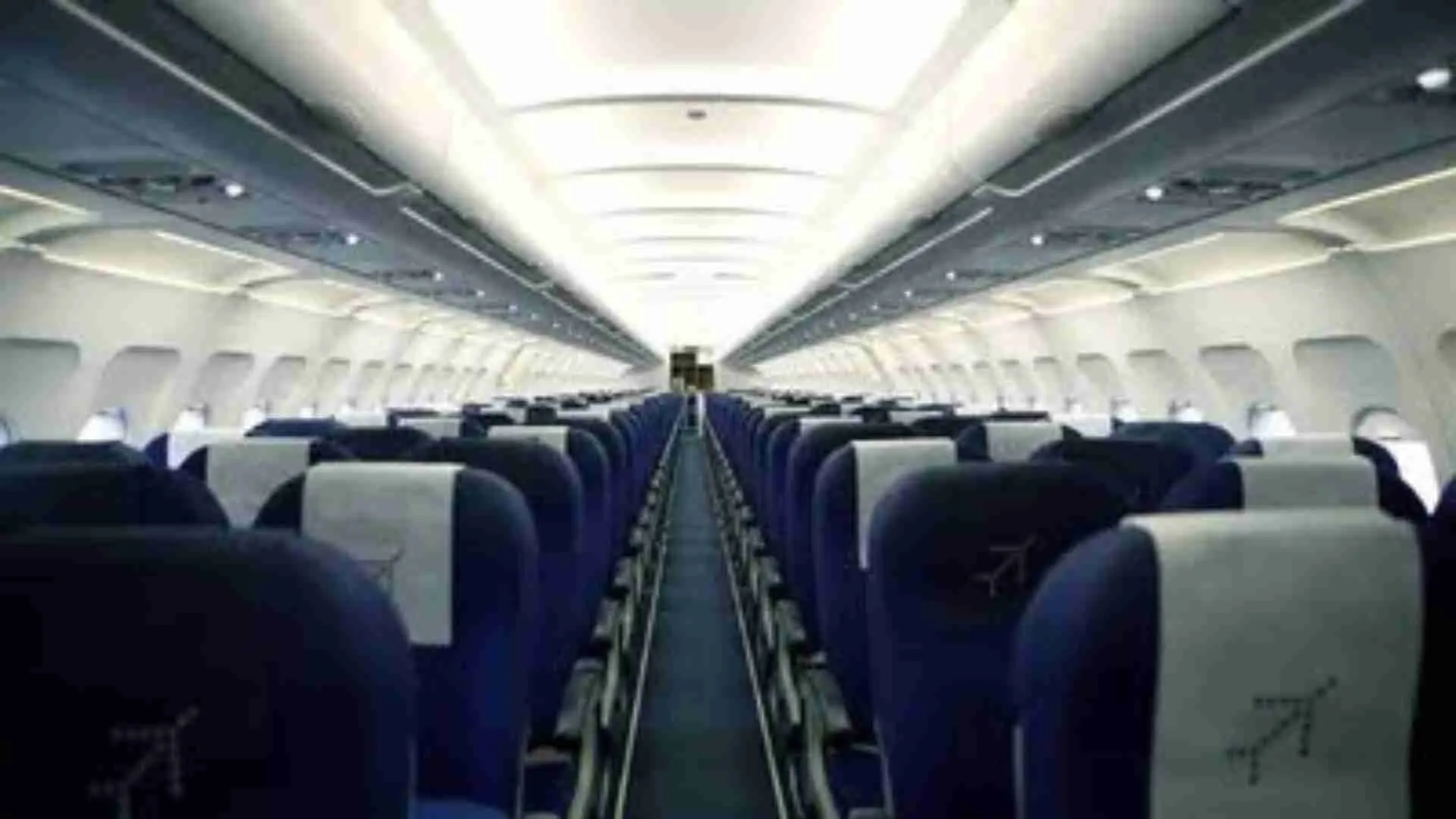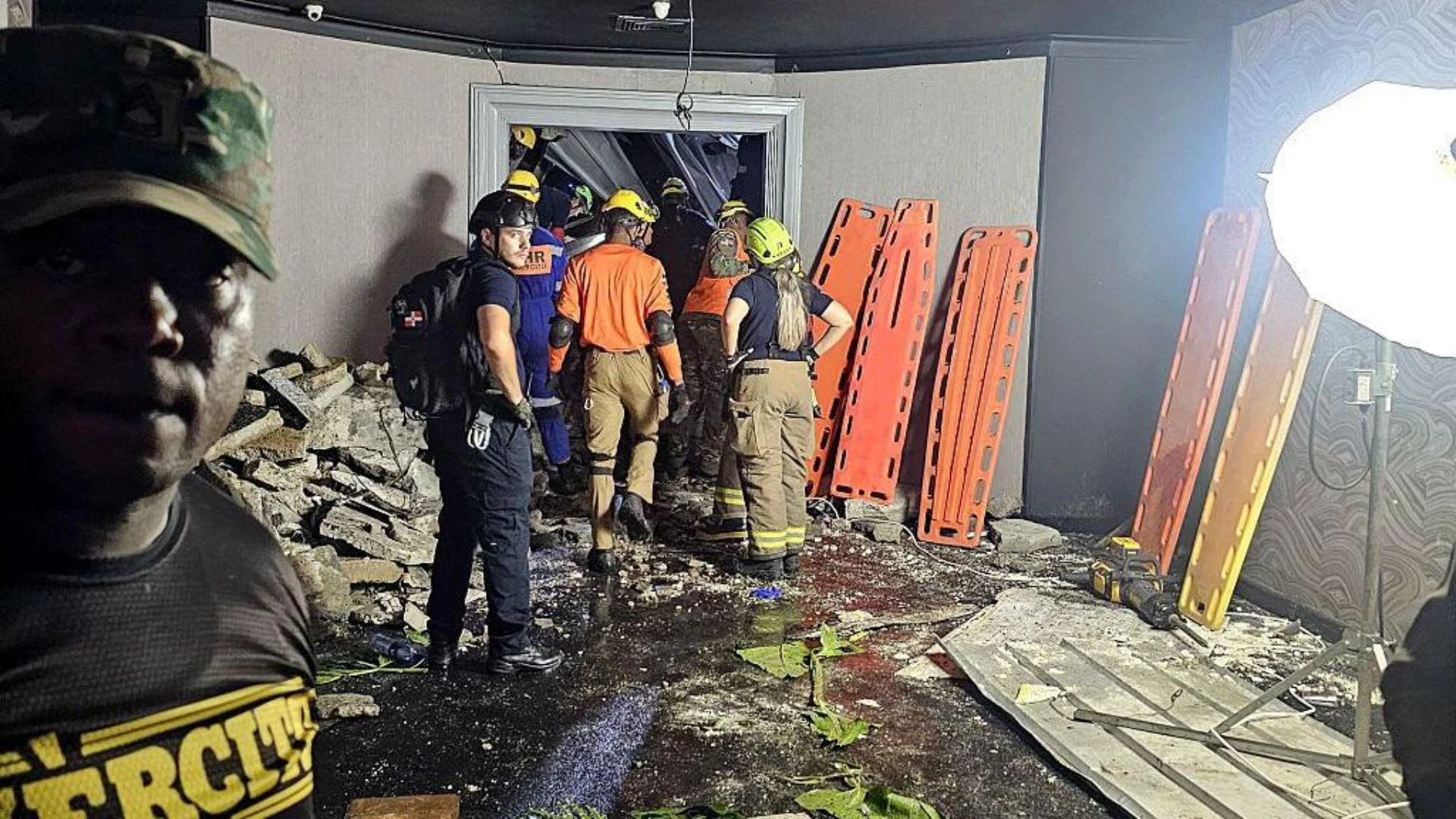The Indian Coast Guard (ICG) created yet another maritime history of a kind by responding and coordinating a major firefighting operation onboard Very Large Crude Carrier (VLCC) ‘MT New Diamond’ wherein the entire highly inflammable cargo ‘Kuwait Export Crude’ was protected despite raging fire and intermittent explosions. The ICG spearheaded a perilous fire-fighting operation that lasted over 7 days, in dousing an intense fire onboard the 333-metre-long oil tanker off the Sri Lankan east coast, carrying about 3 lakh metric tonne of crude oil (Category 1 inflammable liquid), thus averting a serious disaster in the region which otherwise would have threatened the bio-diversified marine environment off Sri Lanka, Maldives and southern India. Comparing with the recent oil-spill mishap of 1,000 tonne Bunker Oil from MV Wakashio witnessed off Mauritius in August 2020 that led to declaration of National Emergency by the island nation, the quantum of crude in this incident was 270-times more voluminous. It is left to imagination that how devastating an oil spill off this high magnitude would have been for the region.
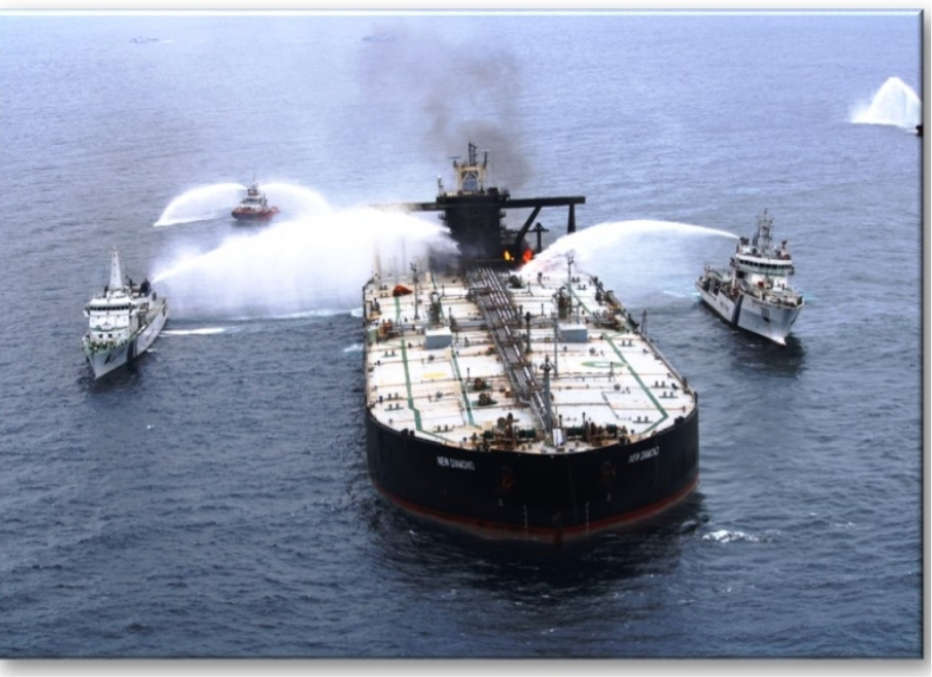
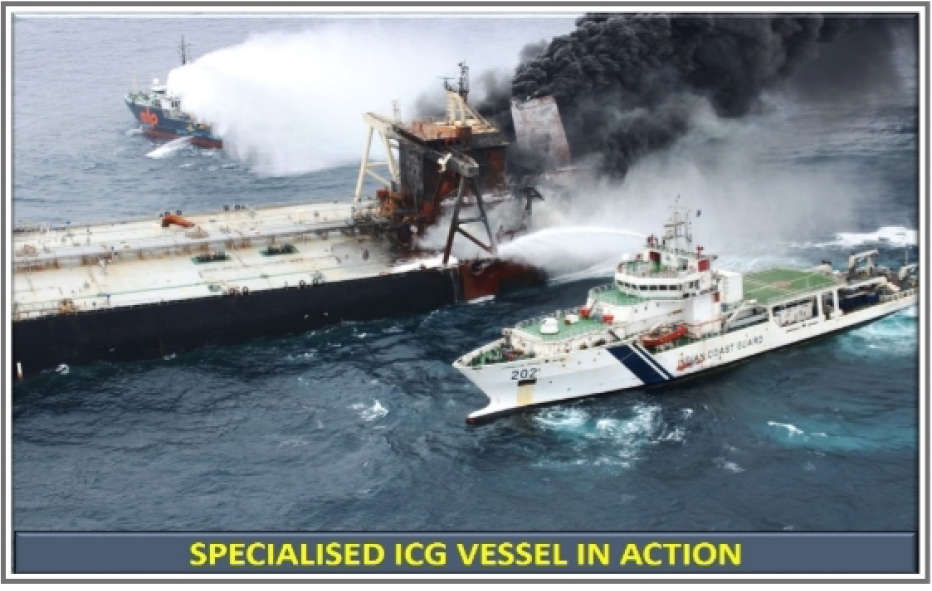
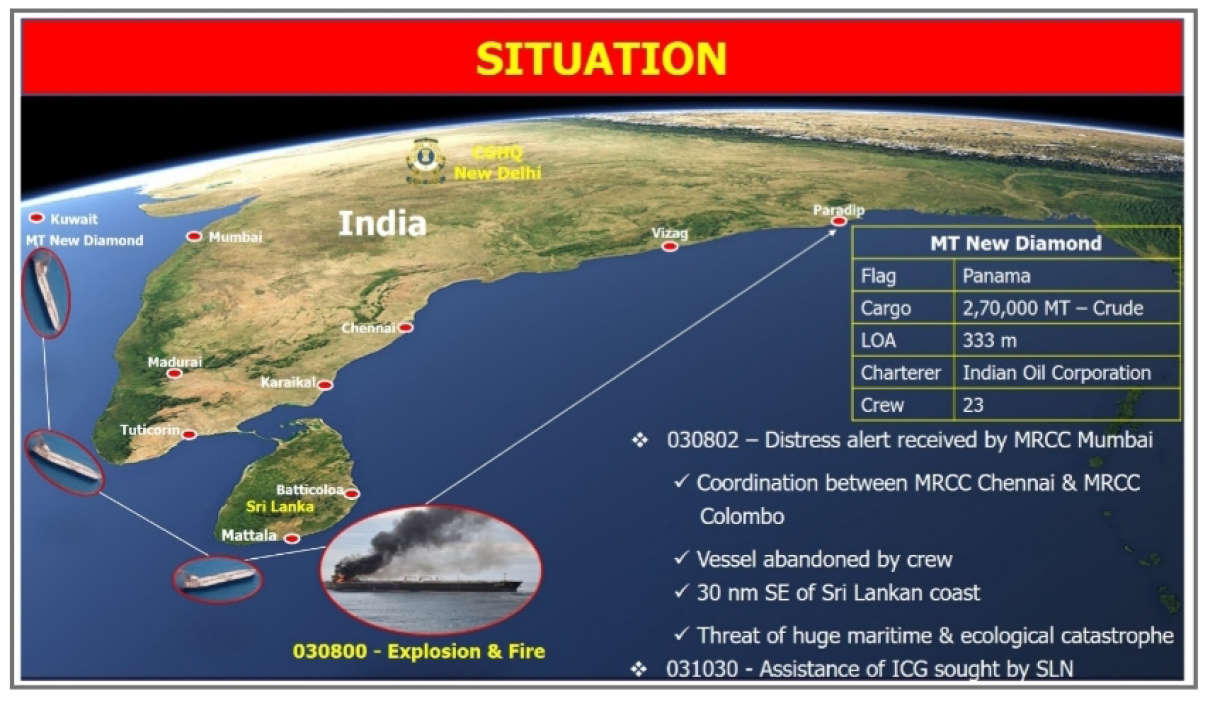
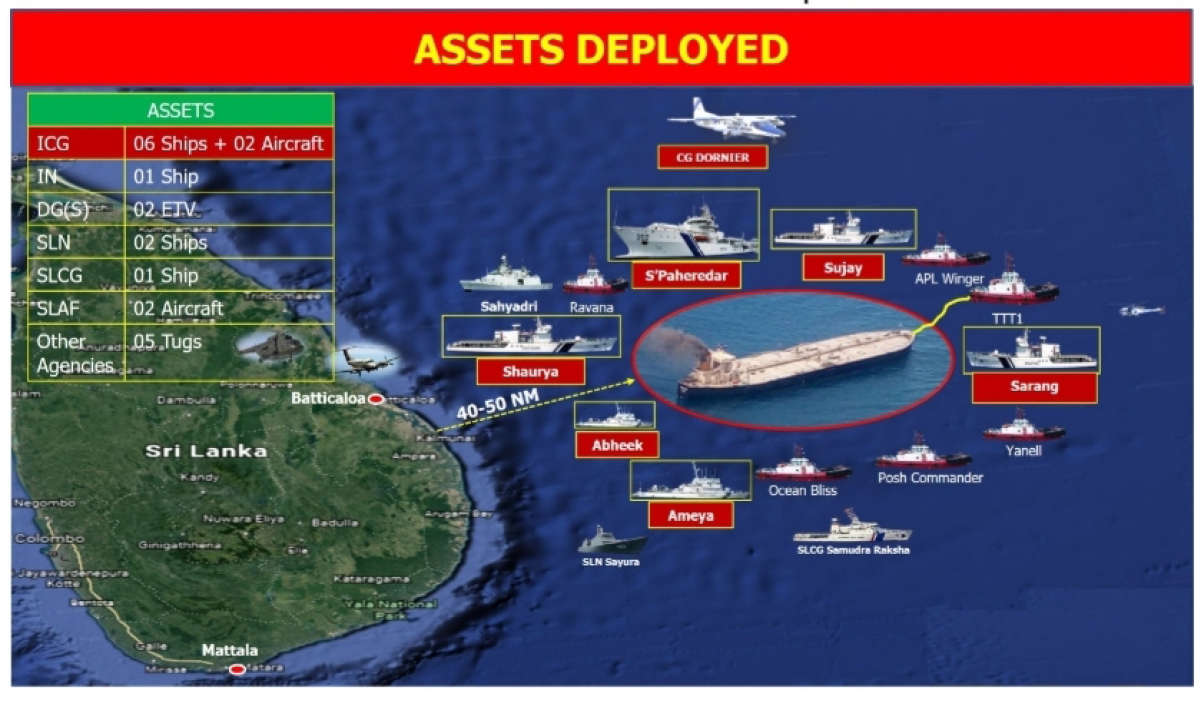
MT New Diamond, a Panama flagged vessel with 23 crew, was on passage from Kuwait to India (Paradip Port), reported fire due to boiler explosion aboard on the morning of 3 September about 40NM (approximately 70 km) of Tirrukkovil (south-east off Sri Lankan coast).The distress message was picked up by Maritime Rescue Coordination Centre (MRCC), Colombo and by MRCC Mumbai. The Sri Lankan government, post assessing the situation, requested immediate support of India through Indian High Commission in Sri Lanka.
Indian Coast Guard is the authority for National Maritime Search & Rescue (NMSAR), National Coordinating authority for oil spill response in Indian waters and Competent National Authority under the regional South Asian Co-operative Environment Program (SACEP) for responding and coordinating marine pollution response in South Asian Sea region. The SACEP Sri Lanka, sought assistance of ICG, as the threat of oil spill to the entire region was imminent to conduct rescue and fire fighting operation on the ill-fated tanker, including pollution response operation, India being a signatory to the regional association mechanism.
A multi-mission capable Offshore Patrol Vessel ICGS Shaurya, on preventive deployment off Tamil Nadu coast, immediately diverted and was the first ship to arrive at the “Golden Hour” on scene to commence fire fighting by afternoon on same day. The night of 3rd Sep witnessed one more blast onboard Motor Tanker and ICGS Shaurya continued her effort to keep the fire under control. Meanwhile, a joint effort by MRCC of ICG and Sri Lanka Navy had ensured rescue of 22 of the 23 crew by alerting nearest ships in vicinity. The timely and daring firefighting efforts by ICGS Shaurya was the game changer and ensured that the fire remain contained within the bridge and accommodation area. If not, the fire would have spread to the cargo hold carrying huge volume of crude, resulting in explosions and consequent catastrophic environmental disaster.
By 4 September morning, six ICG ships, including specialist Pollution Response Vessel, augmented initial response and two Dornier aircraft were pressed in action to operate from Sri Lankan soils for logistics & pollution response. ICG Ships utilised sophisticated special-fit External Fire Fighting (EFF) system to spray foam compound for smothering the oil fire. In addition to ICG ships, Sri Lankan tugs Ravana, Vishaba and ALP Winger, also joined on 4 September and commenced fire fighting.
While the collective fire-fighting was underway, the adrift distressed vessel was moving towards Sri Lanka coast due to the prevailing seasonal currents in area, posing an immediate threat of grounding and resultant oil spill once near depths of 20 metres. Indian Coast Guard boarding team, in a high risk operation braving the rough seas and adverse conditions, embarked the under fire unmanned tanker and successfully connected the tow to Sri Lankan Tug TTT-1 to pull it away from land and position favourably into the wind to prevent spread of fire to the forward section of the ship. This move was crucial turning point of the operation that ensured saving cargo of the oil tanker as also averting major oil spill in the region.
With intense and persistent firefighting attack for three days by ICG Ships along with Sri Lankan ships and tugs, coming within 50 metres of a potentially huge explosive seat, the fire got doused by 6 September morning. ICG ships, however, continued to monitor the situation, in case of re-eruption due to prevalent temperature and undertook surface-boundary cooling to reduce it around the cargo holds.
As estimation of a likelihood of reoccurrence, a huge explosion again occurred on the starboard diesel oil tank on 6 September afternoon and by midnight, huge flames reaching up to 60 metre height from the deck were seen at the rear part of the ship. All units scaled up from boundary cooling to firefighting and as a result of yet again sustained and close quarter efforts by 4 ICG Ships and 2 Sri Lankan and 3 salvor tugs, the fire was completely doused again by 8 September afternoon. Notwithstanding, continuous boundary cooling with sea water was maintained to reduce temperature of the ship’s structure. As a result of two major explosions of fuel oil tanks, the deck and hull on port and starboard side got ruptured. This led to escape of oil water emulsion from engine room to sea and formation of minor oil sheen.
On 9 September, ICG Dornier aircraft which was preemptively positioned at Sri Lankan air base (Mattala) was launched in pollution response configuration for spray of Oil Spill Dispersant (OSD) to neutralise the sheen. Simultaneously, ICG ships in area also sprayed OSD and churned the waters for kinetic action and to accelerate the disintegration of the oil sheen. Under no circumstances, the major cargo tanks were breached nor the Kuwait export crude escaped to sea. A major mile stone was achieved by preventing the oil spill during the entire operation. Had there been an oil spill of such high magnitude, the fisheries and livelihood of fishermen of the entire region would have been severely impacted.
The collective surface firefighting efforts was supplemented by aerial dropping of Dry Chemical Powder (DCP), a fire-fighting substance, by Sri Lankan Air Force. Further, Sri Lankan Naval authorities sought ICG support for five tonne DCP for firefighting which was sourced from M/s IOC, Chennai and airlifted to Trincomalee. The salvage team hired by the owner which arrived on 6Sep aligned with ICG plan and approach for the firefighting operation.
The salvage team boarded the vessel on 9 Sep 20 and assessed no hotspots, flames/smoke with no breach of cargo tanks. Naval architect in salvage team confirmed that the ship’s stability remained within the safe zone. Indian Coast Guard continued to closely monitor the situation even after the salvage team took over control of the ship. Post declaration by the salvor that the casualty vessel is safe as also upon receipt of information from the Sri Lankan authorities through HCI in Sri Lanka, the ICG units were withdrawn from the scene on 10 Sep.
The large scale, professional and proactive efforts of ICG have been appreciated at the international level by the government and the armed forces of Sri Lanka as also by former President of the Maldives. A major ecological disaster was averted in India’s backyard by joint efforts of Indian Coast Guard, Sri Lankan armed forces and tugs deployed by Sri Lankan naval authorities and DG (Shipping). The incident response also highlighted close co-operation and inter-operability with forces of our immediate neighbours in all together a new dimension, invoking the established MoU between the two nations.
This operation has brought to fore the lead role played by India and the capability of ICG to respond to an emerging situation to protect the maritime environment in living up to its motto of “Vayam Rakshamah” (We Protect).

